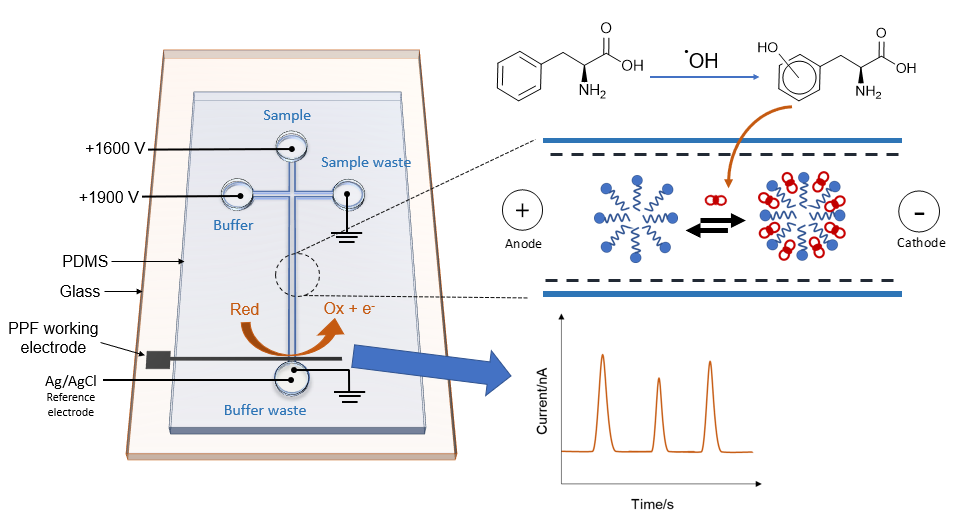Susan M. Lunte named January 2023 Sutton Family Research Impact Award recipient

The Department of Chemistry congratulates Ralph N. Adams Distinguished Professor of Chemistry and Pharmaceutical Chemistry Susan M. Lunte on receiving the January 2023 Sutton Family Research Impact Award! Her winning paper was published in the Special Issue of Electroanalysis and honors the career and contributions of Theodore "Ted" Kuwana to the field of Electroanalytical Chemistry. It is titled "Separation and Detection of Tyrosine and Phenylalanine-derived Oxidative Stress Biomarkers Using Microchip Electrophoresis with Electrochemical Detection."
The Sutton Award is a monthly competition among chemistry faculty. Every month, the Chemistry Department Chair and Associate Chairs review the peer-reviewed papers published by chemistry faculty from the three previous months to select a winner. The recipient receives a $500 cash prize and is featured on the departmental website.
For a full list of winners, visit our Sutton Family Research Impact Award webpage.
Separation and Detection of Tyrosine and Phenylalanine-derived Oxidative Stress Biomarkers Using Microchip Electrophoresis with Electrochemical Detection
By Dhanushka B. Weerasekara and Susan M. Lunte
Published in: Electroanalysis 2022, 34, 1913
A group of radical and non-radical small molecules called reactive nitrogen oxygen species (RNOS) are generated by cells due to a variety of cellular processes including metabolism and aging. These are highly reactive, short-lived molecules that can react with DNA, proteins, and lipids. The production of RNOS is kept in a balance by another group of molecules known as antioxidants. Due to inflammatory and certain disease conditions, the production of RNOS overcomes the antioxidant defense system in a process called oxidative stress. Oxidative stress is believed to be the cause of many diseases including neurodegenerative disease, cardiovascular disease, diabetes and cancer. Tyrosine and phenylalanine are two amino acids that can undergo modifications after reacting with RNOS, making them biomarkers for oxidative stress in cells.
In this study, we investigated the reaction of tyrosine and phenylalanine with hydroxyl radicals and peroxynitrite (two major RNOSs) and monitored the resulting products using a technique called microchip electrophoresis (ME) with electrochemical detection (EC). ME-EC has the ability to selectively detect these electrochemically active modified tyrosine and phenylalanine molecules in small volume samples with fast analysis times. A micellar ligand exchange chromatography technique that utilizes a background electrolyte containing a copper (II)-4-hydroxyproline complex and sodium dodecyl sulfate was used for the separation of all analytes. This ME-EC system consisted of a polydimethylsiloxane (PDMS)/glass hybrid microchip with a 7 cm separation channel. Electrochemical detection was accomplished using an electrically isolated potentiostat. A two-electrode system was utilized consisting of a 35 µm wide carbon pyrolyzed photoresist film (PPF) working electrode (WE) and a Ag/AgCl reference electrode.
This paper was published in a special issue of Electroanalysis dedicated to Professor Ted Kuwana, who was both a graduate student and distinguished professor at the University of Kansas in the Department of Chemistry.
